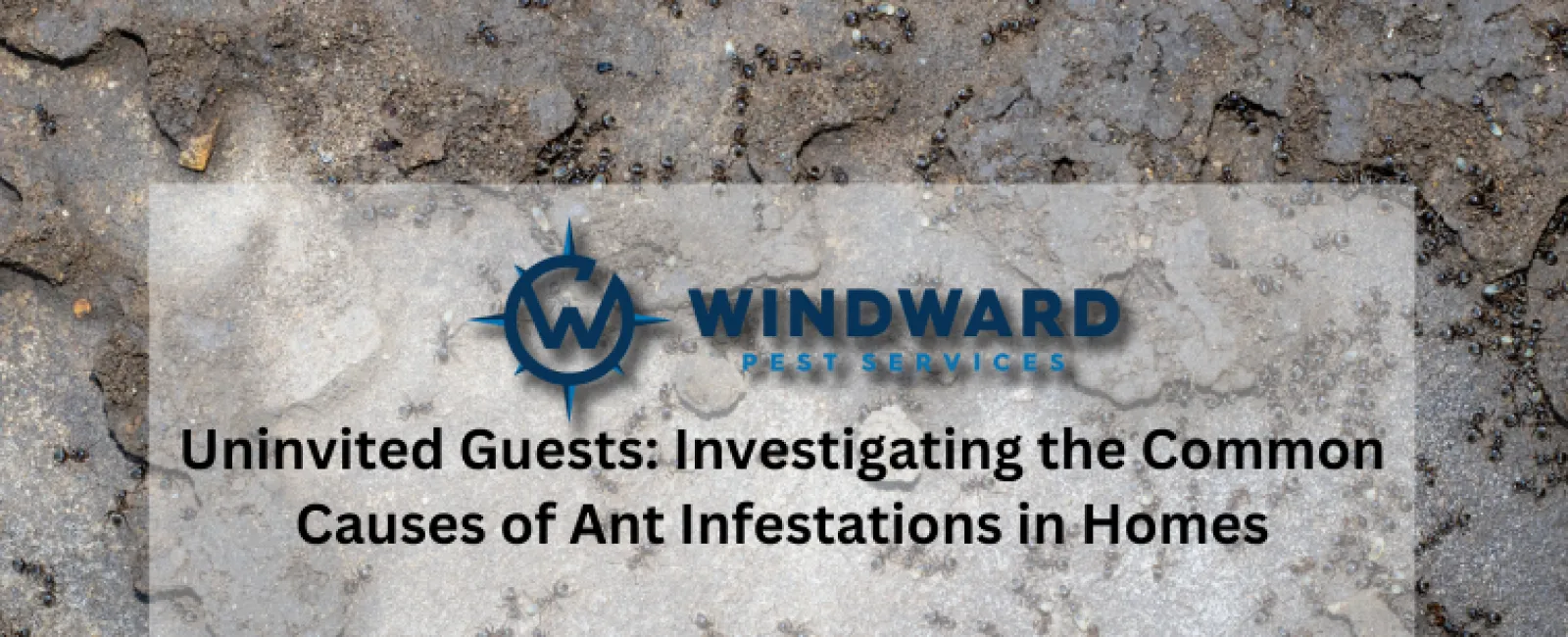Ant infestations are a persistent nuisance for homeowners, often causing frustration and concern. From tiny black ants to larger carpenter ants, these unwanted guests can invade homes in search of food, water, and shelter. Understanding the common causes of ant infestations is crucial for effective home pest control. In this comprehensive guide, we'll delve into the reasons behind ant invasions and explore practical solutions for prevention and eradication.
Understanding Ant Behavior
Before delving into the causes of ant infestations, it's essential to understand the behavior of these resilient insects. Ants are highly social creatures that operate in colonies, with each member playing a specific role. They communicate through pheromones and utilize sophisticated foraging techniques to locate food sources.
Common Types of Ants Found in Homes
Ants are a diverse group of insects, and several species are known to invade homes, each with distinct characteristics and nesting habits. Understanding the different types of ants can help homeowners identify and address infestations effectively. Here are some of the most common types found in homes:
Argentine Ants (Linepithema humile): Argentine ants are small, light brown ants known for forming massive colonies with multiple queens. Native to South America, they have become a widespread nuisance in many parts of the world, including the United States. Argentine ants are highly adaptable and can thrive in a variety of environments. They are attracted to sweet foods and moisture, making kitchens, bathrooms, and other damp areas prime targets for infestation. Argentine ant colonies can be challenging to eradicate due to their large size and interconnected network of nests.
Odorous House Ants (Tapinoma sessile): Odorous house ants get their name from the foul odor they emit when crushed, often described as smelling like rotten coconut or blue cheese. These dark brown to black ants are attracted to sugary substances and are commonly found foraging in kitchens and pantries. Odorous house ants establish trails between their nest and food sources, making them relatively easy to track. While they are not known to cause structural damage, odorous house ants can be a persistent nuisance in homes, especially during the warmer months.
Carpenter Ants (Camponotus spp.): Unlike many other ant species, carpenter ants nest in wood, including both natural and man-made structures. These large ants vary in size and color, ranging from red to black. Carpenter ants do not eat wood but excavate galleries to create nesting sites, which can weaken wooden structures over time. Homes with moisture problems or decaying wood are particularly vulnerable to carpenter ant infestations. While they prefer damp wood, carpenter ants can also nest in dry, sound wood. Identifying and eliminating carpenter ant colonies early is crucial to prevent significant damage to the structure of the home.
Pavement Ants (Tetramorium caespitum): Pavement ants are named for their habit of nesting under sidewalks, driveways, and foundation slabs, although they can also invade homes in search of food. These small, brown ants are commonly found in urban and suburban areas throughout North America. Pavement ants are opportunistic feeders and will consume a wide variety of foods, including sweets, meats, and greasy foods. They are often attracted to crumbs and food spills in kitchens and dining areas. While pavement ants do not pose a direct threat to structures, their presence indoors can be unsightly and bothersome.
Common Causes of Ant Infestations
Ant infestations can be a persistent problem for homeowners, but understanding the underlying causes can help in prevention and control efforts. Here are some common factors that contribute to ant infestations in homes:
Food Sources: Ants are opportunistic feeders and are attracted to easily accessible food sources. Crumbs, spilled liquids, and open food containers left unattended in kitchens, pantries, and dining areas provide a tempting feast for hungry ants. Improperly stored food not only attracts ants but also sustains their colonies, leading to larger infestations over time. Regularly cleaning up spills, storing food in airtight containers, and maintaining a clean kitchen environment can help reduce the likelihood of ant infestations.
Moisture: Like all living organisms, ants require water to survive. Homes with moisture problems, such as leaky pipes, dripping faucets, and poorly ventilated areas, provide an ideal environment for ants to thrive. Bathrooms, kitchens, and basements are common areas where moisture accumulates, creating hospitable conditions for ant infestations. Addressing plumbing leaks, improving ventilation, and using dehumidifiers in damp areas can help reduce moisture levels and discourage ant activity indoors.
Entry Points: Ants are skilled at finding entry points into homes, exploiting even the tiniest cracks and gaps in walls, doors, and windows. Common entry points include gaps around utility lines, vents, and cables, as well as openings in door and window frames. Once inside, ants leave scent trails to communicate with other colony members, leading to widespread infestations if left unchecked. Sealing entry points with caulk, weather stripping, or other suitable materials can help prevent ants from gaining access to the home and reduce the risk of infestation.
Outdoor Nesting Sites: Ant colonies often establish outdoor nesting sites near homes, providing a launching point for foraging expeditions indoors. Overgrown vegetation, mulch beds, and decaying wood in close proximity to the home create ideal nesting sites for ants, allowing them easy access to food sources indoors. Regularly trimming vegetation, removing leaf litter, and maintaining a clear perimeter around the home can help deter ants from nesting nearby and reduce the risk of infestation.
Seasonal Changes: Ant activity tends to increase during certain times of the year, particularly in spring and summer, when warmer temperatures encourage foraging and reproduction. During these seasons, homeowners may notice a surge in ant activity both indoors and outdoors as ants search for food, water, and suitable nesting sites. Taking proactive measures to prevent ant infestations before they occur, such as implementing regular pest inspections and maintaining good sanitation practices, can help minimize the impact of seasonal changes on ant activity in homes.
Prevention and Control Measures
Maintain Cleanliness: Regular cleaning and proper sanitation are essential for preventing ant infestations. Clean up spills promptly, store food in airtight containers, and vacuum regularly to remove crumbs and food debris.
Eliminate Moisture: Fix leaky pipes, repair dripping faucets, and ensure proper ventilation in bathrooms and basements to reduce moisture levels. Use dehumidifiers in damp areas to discourage ant activity.
Seal Entry Points: Seal cracks, gaps, and openings around doors, windows, and utility entry points to prevent ants from entering the home. Use silicone caulk or weather stripping to seal gaps effectively.
Remove Outdoor Nesting Sites: Trim overgrown vegetation, remove leaf litter, and maintain a clear perimeter around the home to deter ants from nesting nearby. Replace mulch with alternative landscaping materials such as gravel or rubber mulch.
Professional Pest Inspections: Schedule regular pest inspections with reputable Atlanta pest control companies to identify and address potential ant infestations early. Professional pest control technicians can implement targeted treatments and offer tailored solutions for long-term ant control.
Ant infestations in homes can be a persistent problem, but understanding the common causes and implementing proactive prevention measures can help homeowners effectively manage these unwanted pests. By maintaining cleanliness, eliminating moisture sources, sealing entry points, removing outdoor nesting sites, and investing in professional pest inspections, homeowners can safeguard their homes against ant infestations and enjoy a pest-free living environment.
Remember, when it comes to home pest control, prevention is key. Stay vigilant, address issues promptly, and enlist the help of qualified professionals when needed to keep ant infestations at bay. With these proactive measures in place, homeowners can reclaim their homes from uninvited ant guests and enjoy peace of mind.

